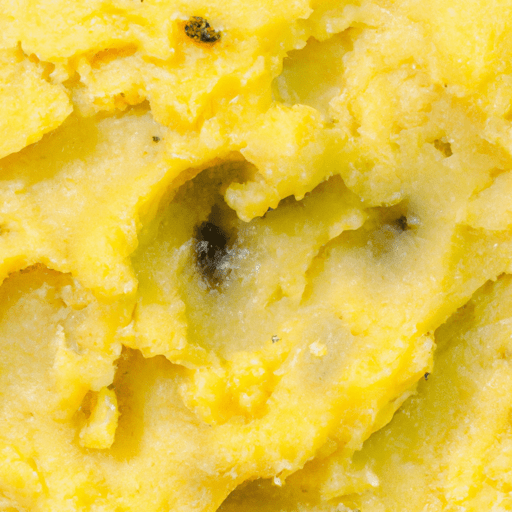Exploring the Delights of Butter Cake Mix: A Versatile Treat for Every Occasion
When it comes to baking, few things can compare to the comforting and aromatic goodness of a butter cake. Soft, moist, and buttery, this classic treat has been enjoyed by generations of dessert enthusiasts. Today, we dive into the world of butter cake mix to unravel its delectable taste, versatile uses in cooking, its nutritional value, and uncover some interesting historical tidbits. So, grab your apron and let’s get baking!
The Marvelous Taste of Butter Cake Mix
Butter cake mix is renowned for its rich and indulgent flavor that will leave you longing for just one more slice. It boasts a delightful balance of sweetness and buttery undertones, creating a taste that is both familiar and comforting. The cake’s crumb is tender and moist, offering a melt-in-your-mouth experience that is hard to resist.
Versatile Uses in Cooking
Butter cake mix proves to be an incredibly versatile ingredient in the culinary world. Beyond its traditional form - a simple, delicious cake - it can be transformed into an array of delightful creations. Here are just a few inspiring ways to use butter cake mix:
- Cupcakes: Whip up a batch of buttery cupcakes, perfect for parties or a sweet afternoon indulgence. Top them off with luscious frosting and a sprinkle of creativity for a truly delightful treat.
- Layered Cakes: Create an impressive layered cake, stacked with velvety buttercream frosting or fruity fillings. This show-stopping dessert is sure to impress at birthdays, weddings, or any special occasion.
- Cake Pops: Dive into the trendy world of cake pops, by combining crumbled butter cake mix with frosting, rolling them into irresistibly bite-sized spheres, and dipping them in decadent chocolate coatings.
- Trifles and Parfaits: Layer butter cake cubes with fresh fruits, whipped cream, and custard to create heavenly trifles or parfaits. These eye-catching desserts are as delightful to look at as they are to taste.
Nutritional Value
While butter cake mix may be heavenly in taste, it’s important to consider its nutritional value. As a dessert, it should be enjoyed in moderation as part of a balanced diet. The exact nutritional content may vary based on specific brand and recipe variations. However, typically, butter cake mix provides a significant source of carbohydrates, some protein, and a small amount of dietary fiber. Additionally, it often contains essential vitamins and minerals such as calcium and iron.
Fun Facts and Historical Tidbits
Did you know that the origins of butter cake can be traced back to Europe? This delightful treat gained popularity in the early 19th century during the Victorian era. The widespread availability of butter, sugar, and flour contributed to its rise in popularity.
Over time, butter cake mix has evolved and adapted to suit individual preferences. Today, you can find a wide range of variations, including chocolate-infused, citrusy, or even gluten-free options. This versatility ensures that there is something to satisfy everyone’s cravings.
Butter cake mix is a true testament to the wonders of baking. Its delightful taste, versatility, and rich history make it an essential ingredient in any baker’s repertoire. Whether you’re whipping up a simple cake for a family gathering or experimenting with creative twists, this classic treat is sure to leave your taste buds yearning for more. So, next time you’re in the mood for a buttery indulgence, reach for that box of butter cake mix and let your imagination take flight in the kitchen.
Butter Cake Mix
Origin: The exact origin of butter cake mix is unclear, as it is a modern convenience product that began being produced and sold commercially in the mid-20th century. However, the concept of making cakes using butter as a main ingredient has been around for centuries, with butter being a staple in baking due to its rich flavor and ability to create tender and moist cakes.
Common Uses: Butter cake mix is a versatile ingredient that is used to make various types of cakes. It is commonly used to bake classic butter cakes, which have a tender crumb and a rich, buttery flavor. Additionally, it serves as a base for creating different flavors and variations by adding ingredients such as fruit, chocolate, or nuts.
Nutritional Benefits: Butter cake mix is primarily a source of carbohydrates, providing energy to the body. However, it is important to note that butter cake mix is high in calories, fat, and sugar. It is not considered a nutrient-rich food and should be consumed in moderation as part of a balanced diet.
Unique Properties: Butter cake mix typically contains a combination of dry ingredients such as flour, sugar, leavening agents, and sometimes flavorings. It is specifically formulated to create a moist and tender cake texture when mixed with additional wet ingredients such as butter, eggs, and liquid. Butter cake mix generally produces a cake with a rich and buttery flavor.
Historical Significance: While butter cake mix doesn’t have a specific historical significance, the introduction of cake mixes in general revolutionized home baking. Cake mixes gained popularity in the mid-20th century, making it easier and more convenient for people to bake cakes at home without having to measure and combine all the separate ingredients. This development played a role in increasing the accessibility of homemade cakes and encouraging baking as a popular activity.




Use the share button below if you liked it.
It makes me smile, when I see it.